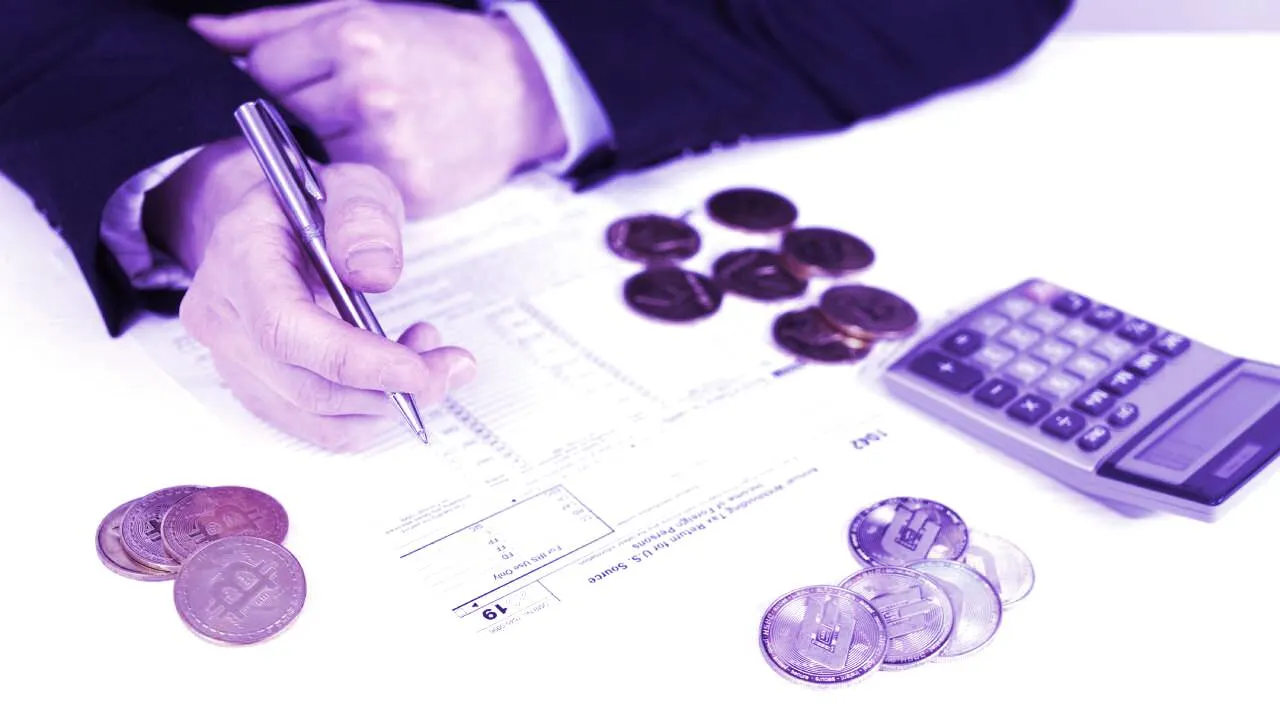Tax season is upon us—the filing deadline to submit 2021 tax returns and pay tax owed is April 18, 2022.
The IRS now asks all Americans to declare whether they’ve had crypto dealings or not.
“At any time during 2021, did you receive, sell, exchange, or otherwise dispose of any financial interest in any virtual currency?,” reads the question on top of Form 1040. Don’t let the wording confuse you. By virtual currency, the IRS means crypto, even though it doesn’t view crypto as a currency–-it’s considered a property for tax purposes, just like stocks and rental houses.
Last year, the IRS sent out warning letters to suspected crypto tax evaders, so it’s never been more important to ensure that your paperwork is in order. Fortunately, there’s plenty you can do to prepare for a smooth crypto tax experience this year. Here are our top tips.
1. Don’t try to hide crypto trades from the IRS
Let’s set the record straight.
If you think the IRS doesn’t know what you’re up to on decentralized exchanges like Uniswap, let alone centralized exchanges like Coinbase… then you’re wrong.
All major crypto exchanges have a KYC (Know Your Customer) process in place. When you pay fiat using a debit or credit card, or a bank wire, then your crypto exchange will also link your banking information to you.
In the past, the IRS has also used the so-called John Doe summons to compel crypto exchanges to divulge the full details of their customers.
And when you withdraw funds from a centralized exchange into, say, an Ethereum address, that address is associated with your KYC’ed exchange account.
In March 2021, the IRS set up Operation Hidden Treasure, a dedicated team to dig up unreported crypto from the deep corners of the blockchain and hold taxpayers accountable. So think again if you assume the IRS isn’t crypto-savvy. It probably has more crypto experts on its payroll than you have on your Telegram channels.
2. Crypto tax is your individual responsibility
Last November, President Biden signed into law a $1.2 trillion bipartisan infrastructure bill, a part of which requires so-called brokers like cryptocurrency exchanges to issue 1099-B tax forms. But the law is effective as of next financial year, so don’t expect tax forms from your exchanges—some may choose to send you one voluntarily, however.
In any case, crypto exchanges–or anyone, really–have no responsibility to help you get your crypto taxes in order and help you submit the forms on time. It’s your sole duty.
But you can make filing your crypto taxes less cumbersome and more accurate by using software like Koinly, which offers an array of free features to simplify the process.
3. Disclose previously avoided crypto taxes
The IRS has been sending out letters to crypto investors and traders suspected of underreporting or evading tax. Specifically, these letters are called 6173 and 6174 (no-action, educational) or 6174-A (action required).
What if you didn’t do your crypto taxes last year or you did but grossly underreported it? In the worst case scenario, you could face a fine starting from $25,000 and criminal charges with up to 5 years in prison.
The way to avoid such gloomy prospects is to voluntarily disclose to the IRS and cooperate.
The IRS has updated the Form 14457 for “the Voluntary Disclosure Practice Preclearance Request and Application” with a section on reporting crypto. You can use Form 14457 if the agency hasn’t taken any legal action against you.
4. Understand the basics of crypto tax
There are broadly two ways your crypto gets taxed.
If you earn crypto, it’s subject to Income Tax. Crypto earnings could be from play-to-earn games like Axie Infinity, or it could be from an airdrop like the Ethereum Name Service.
And if you sell, swap, or spend crypto, it’s subject to Capital Gains Tax.
DeFi and NFTs are also subject to the same tax rules as cryptocurrency dealings on centralized exchanges. Figuring out which tax rule applies to them is admittedly messier than mere cryptocurrency trades.
It’s not all straightforward, and there are many nuances. If you’re not intent on mastering the tax code applicable to crypto, your best bet is just to use crypto tax software like Koinly.
5. Hodl long-term vs short-term
Understanding the basics of crypto tax isn’t only helpful when it comes to reporting and paying taxes, but it can also help reduce your tax burden if you build a strategy around it.
Here’s an example. If you hold crypto for more than a year, then it’s subject to long-term Capital Gains Tax. But if you hold it shorter than a year, then it will be treated under short-term Capital Gains Tax. The latter is the same as your income tax rate, and so it’s a less favorable tax rate. If you want to pay less tax, you’ll want to hold crypto longer than a year—all things being equal.
6. Pick your cost basis wisely
The tax code may seem stringent at first. But in fact, there’s a lot of wiggle room. One area that you get to choose is your cost basis, or how you calculate the original price of your crypto investments.
You can pick from:
- FIFO (first-in, first-out)
- LIFO (last-in, first-out)
- HIFO (highest-in, first-out)
- Spec ID (specific identification)
It's a bit of an alphabet soup, and each one has its pros and cons. You can only choose and stick with one in a given tax year.
When calculating the cost basis of your #CryptoTax there are different ways, depending on which country you live in, that you can use 🧮.
Here are the 3 most common methods ⬇️#TaxTwitter pic.twitter.com/GS68T1kVWV
— Koinly (@koinly) August 18, 2021
The easiest way of going about is running simulations of your tax burden through a tax software like Koinly by trying out different cost basis alternatives. Then stick with the one that seems most tax-efficient for your purposes.
7. Losses matter too
When it comes to tax, it’s not only the gains that count.
You can offset a maximum of $3,000 net capital loss against your capital gains. And if you have more capital losses than gains, you can offset your net capital loss against your personal income.
Surely some of your crypto investments have gone to goblin town?! So take advantage of that by realizing losses. Remember, unrealized gains or losses don’t count for tax purposes.
8. Harvest tax loss
As previously mentioned, tax evasion, or failure to pay due taxes, is illegal. But tax avoidance—the strategic reduction of potential taxes—is a legal and widespread practice.
One way of harvesting tax loss is a wash sale, which is when investors sell an asset at a loss and register capital loss for the tax year, only to buy it back later.
Profits & losses from #crypto are subject to Capital Gains Tax.
Profit: When you dispose of crypto and make a profit, this is subject to CGT.
Loss: When you dispose of crypto & make a loss, there's no tax. You can usually offset these losses against any gains in most countries. pic.twitter.com/dgMn0La0Ju
— Koinly (@koinly) January 21, 2022
The IRS has a wash sale rule that says if you buy back a "substantially identical" asset within 30 days, you can’t declare a capital loss on that asset.
But the rule currently only applies to securities, like stocks and bonds. Crypto is considered a property, not a security.
9. Use tax software to streamline your filing process
Filing your crypto taxes involves keeping track of every trade you’ve made, across self-hosted wallets, centralized exchanges, DEXs, NFTs and more. Keeping accurate records of all those transactions can be challenging, especially if you’ve dabbled in DeFi using tools like liquidity pools and flash loans.
Tax software like Koinly offers a simple one-stop solution for filing your crypto taxes, pulling in data from exchanges, wallets and blockchains to provide you with a holistic view of your tax liabilities. Koinly will even fill out the IRS Report (Form 8949 and Schedule D) for capital gains and losses and Schedule 1 form for income totals for you, and an Expert Review is available to help resolve clashes and inconsistencies.
Decrypt readers can get 30% off Koinly plans by signing up with the code DECRYPT22 at koinly.io.
Sponsored post by Koinly
Learn More about partnering with Decrypt.

